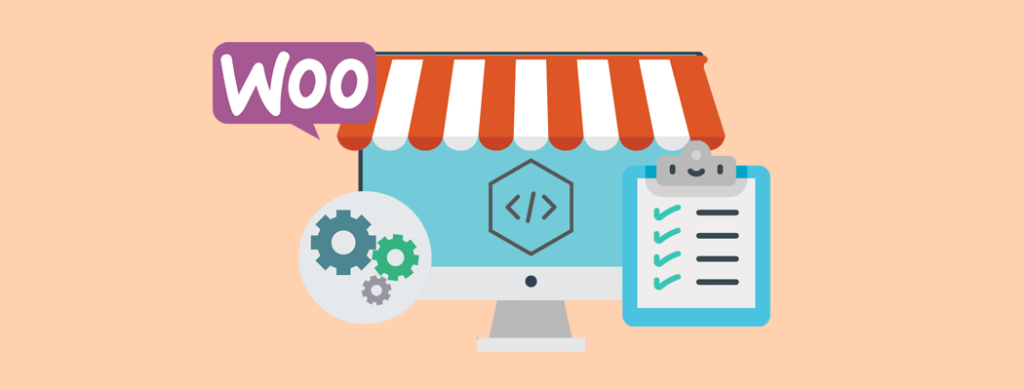Outgrowing a default WooCommerce setup is inevitable for serious businesses. While off-the-shelf themes and plugins offer a quick start, they often fall short on performance, scalability and flexibility.
Custom WooCommerce development gives you full control over your store’s infrastructure, enabling faster load times, streamlined operations and a tailored user experience built for conversions.
Whether you’re integrating with an ERP, optimising checkout or building custom automations, going custom ensures your store grows with your business.
In this guide, we’ll explore what it takes to build a scalable, high-converting WooCommerce store through smart, strategic custom development.
Why Businesses Need WooCommerce Custom Development
Most businesses start with off-the-shelf WooCommerce solutions, but as operations grow, limitations quickly surface. Default themes and plugins often come with bloated code, limited flexibility and poor performance under load. These issues directly impact conversions and scalability.
Enterprise stores, in particular, need more than plug-and-play functionality. They require seamless API integrations, custom workflows, optimised database structures and high-performance infrastructure to support complex operations like multi-warehouse inventory, dynamic pricing, and real-time data sync.
WooCommerce custom development allows businesses to build tailored systems that match their unique processes, reduce technical debt and improve efficiency across the board – unlocking long-term growth and operational resilience.
For details, see the following resources:
- WooCommerce Plugin Development and API Integration
- Elevating Your WooCommerce Store with Extension Development at Progressus
- Decoding WooCommerce Plugin Development: Expert Insights
- Choose a Top WooCommerce Plugin Development Partner: Expert Lead
- Hiring Trusted WordPress Developers Saves You Money: Why and How
How to Build a Scalable, High-Converting WooCommerce Store
A custom WooCommerce store should scale effortlessly, convert efficiently, and deliver a frictionless experience for both shoppers and administrators. Below are expert-backed development strategies for performance, automation, User Experience (UX), Customer Experience (CX) and Digital Experience Platform (DXP).
1. Custom Theme Development: The Foundation of Performance
Default WooCommerce themes may look polished, but they’re built for broad use – not high performance. They often include excess code, third-party scripts and rigid templates that limit your ability to scale or customise UX effectively.
A custom theme, on the other hand, is built specifically for your store’s needs. It includes only the assets and functionality required, reducing load times and boosting conversions through tailored, conversion-first design.
For details, check out WooCommerce Custom Theme Development: Build a Unique Store.
Expert tip: Use lazy loading, optimise CSS delivery and rely on minimal, purpose-built JavaScript frameworks to ensure your custom theme remains lean, fast and scalable as your store grows.
2. Custom Plugin Development: Expanding Functionality Without Bloat
Relying on multiple third-party plugins is a common, but risky approach. Overuse often leads to code conflicts, slow load times and increased security vulnerabilities, especially when plugins overlap in functionality or aren’t regularly maintained.
Custom plugin development solves this by delivering exactly what your store needs – no more, no less. Tailored to your workflows, custom plugins are more efficient, easier to maintain and less likely to break your site.
Expert tip: Use a modular development approach so features load only when needed, keeping your site fast, lightweight, and easier to scale as your business evolves.
Modular plugin development involves breaking functionality into independent, self-contained components that load only when needed, which can be achieved by conditionally enqueuing scripts, using autoloaders, and structuring code to activate features based on specific page contexts or user actions.
3. API Integrations: Making WooCommerce Work for Your Business
As businesses scale, manual workflows and limited plugin functionality can’t keep up. Custom API integrations allow WooCommerce to connect directly with systems like Enterprise Resource Planning (ERP), Customer Relationship Managers (CRMs), payment gateways or shipping providers. This automates data sync, improves accuracy and saves time.
For example, integrating with an ERP can eliminate manual inventory updates, ensuring real-time stock visibility and faster order processing. These integrations are crucial for enterprise-level efficiency.
Expert tip: Use asynchronous API requests to keep your store responsive, especially during checkout, by offloading data processing tasks and reducing strain on your server in real time.
4. Checkout Optimization & Custom Payment Workflows
WooCommerce’s default checkout is functional, but not built for complex or high-volume businesses. As customer expectations rise, a slow or rigid checkout experience can cause drop-offs and cart abandonment.
Custom checkout development solves this by enabling features like one-click purchases, saved payment methods, dynamic pricing and conditional fields that are tailored to specific customer segments or use cases. These enhancements streamline the buying process and boost conversion rates.
Expert tip: Run A/B tests on different checkout layouts and flows to pinpoint what converts best and continuously refine your checkout experience based on real user behavior. For details, check out How to Increase Conversion Rate for WooCommerce with A/B Testing and 6 Myths of A/B Testing WooCommerce to Increase Conversion Rate.
5. Expert Automations: Streamlining WooCommerce for Growth
Manual order handling and inventory updates don’t scale well. Automating these backend processes improves accuracy, saves time and supports business growth.
High-level automations can include dynamic pricing rules based on cart value or customer type, AI-powered inventory management with predictive restocking and customer segmentation for personalized marketing. These systems reduce operational strain and create more responsive, efficient stores.
Expert tip: Use tools like Zapier, Make or custom WooCommerce cron jobs to automate routine bulk tasks and integrate workflows across your tech stack, freeing up your team to focus on strategy and growth.
6. Expertly Enhancing User Experience for Higher Conversions
UX directly impacts conversion rates and scalability. A store that’s confusing, slow or difficult to navigate will frustrate customers and stall growth. Custom WooCommerce development allows for strategic UX enhancements that guide users through the buying journey smoothly.
Predictive search and smart filters make it easy to find products quickly. Sticky carts and checkout reminders keep the path to purchase visible, while mobile-first layouts ensure a seamless experience on all devices. This is essential with mobile making up over 70% of traffic.
Features like one-click reordering and personalized product suggestions improve retention and drive repeat purchases.
Expert tip: Use tools like Hotjar to run heatmap and session testing to see where users click, scroll and drop off. Then, refine the experience for maximum conversions.
7. Expertly Enhancing Customer Experience for Long-Term Growth
In today’s enterprise eCommerce landscape, success goes beyond transactions; it’s about delivering a consistently exceptional customer experience. Custom WooCommerce development enables businesses to build stronger relationships through thoughtful, scalable CX features.
Self-service dashboards empower customers to manage orders, returns and subscriptions without needing support. AI-driven chatbots offer immediate assistance and reduce service load. A seamless omnichannel experience – integrating WooCommerce with retail locations, social platforms and support tools – ensures continuity across every touchpoint. Custom loyalty and rewards systems create incentives for repeat business and deepen brand affinity.
Expert tip: Use customer feedback loops like post-purchase surveys to gather insights and refine CX strategies regularly, ensuring your store evolves with customer expectations.
8. Leveraging a Composable DXP for Scalable Digital Experiences
As eCommerce evolves, delivering a seamless, personalized experience across every touchpoint is no longer optional – it’s expected. A Digital Experience Platform (DXP) helps unify content, commerce, and customer data, enabling WooCommerce stores to scale with consistency and intelligence.
A composable DXP is a modular, API-first approach to building digital experiences by integrating best-in-class services – such as CMS, analytics, personalisation and commerce – rather than relying on a single, monolithic platform. For enterprises, it offers the flexibility to scale and adapt quickly to changing customer needs, reduces vendor lock-in and enables more tailored, high-performing digital experiences across every channel.
With a composable DXP approach, businesses can integrate best-in-class tools – like headless CMS, Customer Data Platforms (CDPs), search and analytics – rather than relying on a rigid all-in-one system.
This modular architecture ensures flexibility, better performance and future-ready infrastructure. WooCommerce’s API-driven nature makes it an ideal foundation for composable DXPs, allowing businesses to adapt quickly to market shifts and customer needs.
Expert tip: Choose DXP components that integrate cleanly with either the official WooCommerce REST API or else you can use GraphQL endpoints and prioritize interoperability for smoother, scalable workflows.
Why You Should Partner with an Expert Agency Like Progressus
Building a scalable, high-performing WooCommerce store requires more than just technical skill. It demands deep expertise in architecture, automation, UX and integrations.
An expert agency like Progressus brings proven experience working with enterprise clients like Automattic, PostNL, and Yoco, delivering custom solutions that go far beyond off-the-shelf setups.
From API-driven development to DXP integration and performance optimisation, we ensure your WooCommerce store is not only built to scale but also tailored to meet your business goals. For enterprises, that level of precision, strategy and long-term support is essential.
Get in touch with us to learn more about how we can help you scale your enterprise for maximum performance and growth.
Final Thoughts: Scaling WooCommerce Requires More Than Just More Traffic
Scaling an enterprise WooCommerce store isn’t just about handling higher visitor volumes, it’s about ensuring optimised site speed, seamless navigation, smart automation and exceptional CX.
By focusing on performance optimisation, checkout efficiency, personalised pricing and expert automation, enterprises can build a high-converting WooCommerce store that grows profitably without sacrificing user experience.
For details on how we can scale growth for your business, feel free to reach out to us for a quote.
Have you run into challenges scaling your WooCommerce store or are you considering custom development to support growth? What solutions have worked for you, and what questions do you still have about building a high-performing WooCommerce experience? Let us know in the comments below.


